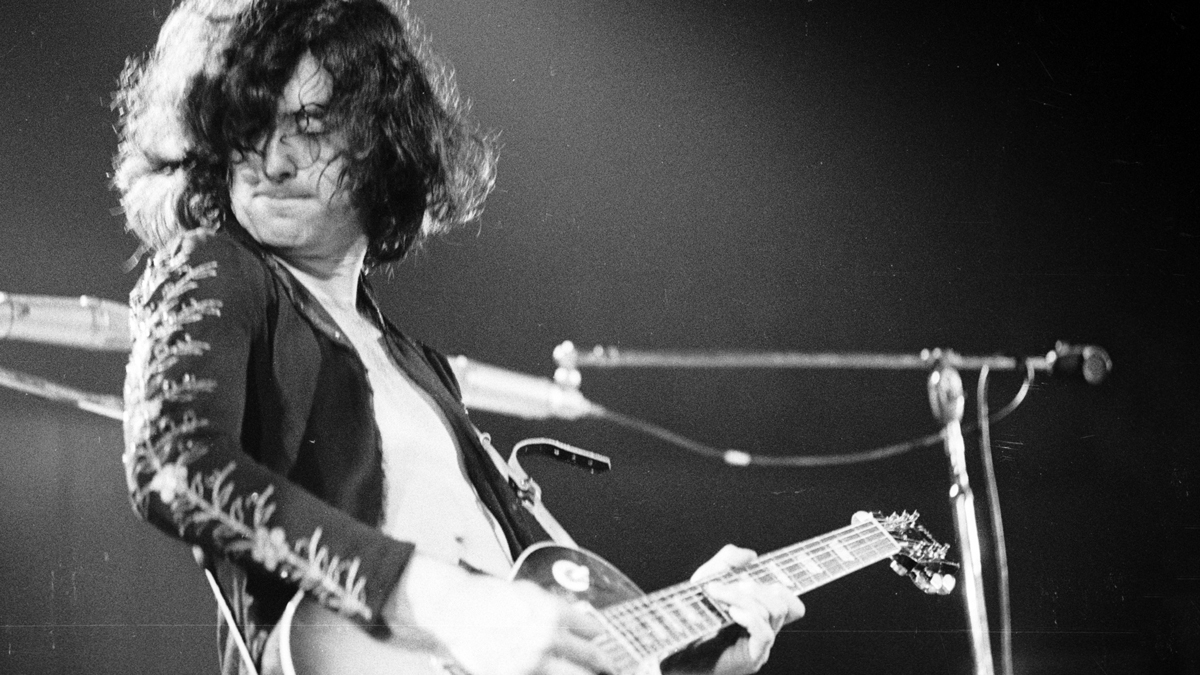Jimmy Page reveals the amp he really used to record Whole Lotta Love
The guitar icon details his setup on classic Led Zeppelin albums in an exclusive new interview with Total Guitar

Jimmy Page has detailed the guitar amp rigs that fueled Led Zeppelin’s earliest albums – including the setup he used for Whole Lotta Love.
During an exclusive, in-depth interview with Total Guitar’s Chris Bird, Page discussed how his transition from Fender Telecaster to Gibson Les Paul inspired his change in amp rigs.
“The amplifier on the first [Led Zeppelin] album is the Supro [Coronado 1690T] amplifier,” he confirms. “It fits great with the Telecaster, but with the Gibson [Les Paul] it was a really overdriven sound, right? And when I started doing studio work, I realized that that was a bit too radical for them at the time.
“So I got what everyone else was getting, so that psychologically it looked right, which was a Burns amplifier, which I had during the studio days. But when Paul Samwell-Smith left the [Yardbirds], he left his equipment behind – the [Vox] amplifier heads. I know them as Super Beatles.
“The way that I heard about those amplifiers was The Beatles had them because they couldn’t hear their instruments over all the screaming, so they wanted louder amplifiers, and Vox duly obliged.”
Page then reveals that the amp you’re really hearing on one of Zeppelin’s most iconic hits is, in fact, the same amp the Fab Four had been using for their larger tours.
“I was using the Super Beatle amps with the [Rickenbacker] Transonic cabinets,” he recalls. “That’s exactly what’s on Whole Lotta Love.”
All the latest guitar news, interviews, lessons, reviews, deals and more, direct to your inbox!
It was only once the band began to tour more intensely that Page switched to his iconic Marshall setup – primarily because it was easier to get hold of replacement gear.
“By the time we get to 1969, we’ve got so much work ahead of us, and the road manager is getting really, really nervous about the amplifier going down and not getting a replacement,” Page reflects.
“So they’re saying, well, everybody else has got Marshalls, so I went to Hiwatt [Custom 100s] before I went to the Marshalls. But then I did go to Marshall because what they’d said was absolutely true – if it broke down somewhere you’d be able to find a shop that would have one.
“Once I’d done the second album, the Marshall is being used by the end of those tracks [recorded] in New York. I got those during that ’69 tour. So maybe Heartbreaker was done on a Marshall. And that’s how it stayed, with the Marshall cabinet all the way through.”
The full interview spans Page’s entire career, with insight and exclusive photos of the gear and recording behind some of Led Zeppelin’s greatest albums.

Mike has been Editor-in-Chief of GuitarWorld.com since 2019, and an offset fiend and recovering pedal addict for far longer. He has a master's degree in journalism from Cardiff University, and 15 years' experience writing and editing for guitar publications including MusicRadar, Total Guitar and Guitarist, as well as 20 years of recording and live experience in original and function bands. During his career, he has interviewed the likes of John Frusciante, Chris Cornell, Tom Morello, Matt Bellamy, Kirk Hammett, Jerry Cantrell, Joe Satriani, Tom DeLonge, Radiohead's Ed O'Brien, Polyphia, Tosin Abasi, Yvette Young and many more. His writing also appears in the The Cambridge Companion to the Electric Guitar. In his free time, you'll find him making progressive instrumental rock as Maebe.

